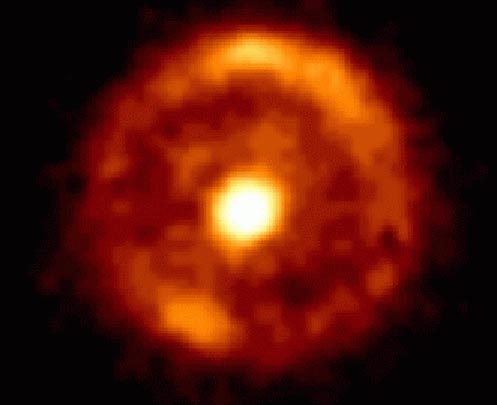A Bulls Eye Einstein Ring

Explanation:
Can one galaxy hide behind another? Not in the case of
B1938+666.
Here the foreground galaxy acts like a huge
gravitational lens,
pulling the light from the background object around it,
keeping it visible. Here the alignment is so precise
that the distant galaxy is distorted into a nearly
perfect giant ring around the foreground galaxy,
a formation known as an
Einstein ring.
The bright peak at the
center of the bulls-eye is the nearer galaxy.
The
cosmic mirage was found initially with the
MERLIN radio telescope array. The follow-up image shown above from the
Hubble Space Telescope was
released earlier today.
Although appearing extremely small at 1
arcsecond diameter, the above
Einstein ring is really tens of thousands of light years across.
Authors & editors:
Robert Nemiroff
(MTU) &
Jerry Bonnell
(USRA)
NASA Web Site Statements, Warnings,
and Disclaimers
NASA Official: Jay Norris.
Specific
rights apply.
A service of:
LHEA at
NASA /
GSFC
& Michigan Tech. U.

